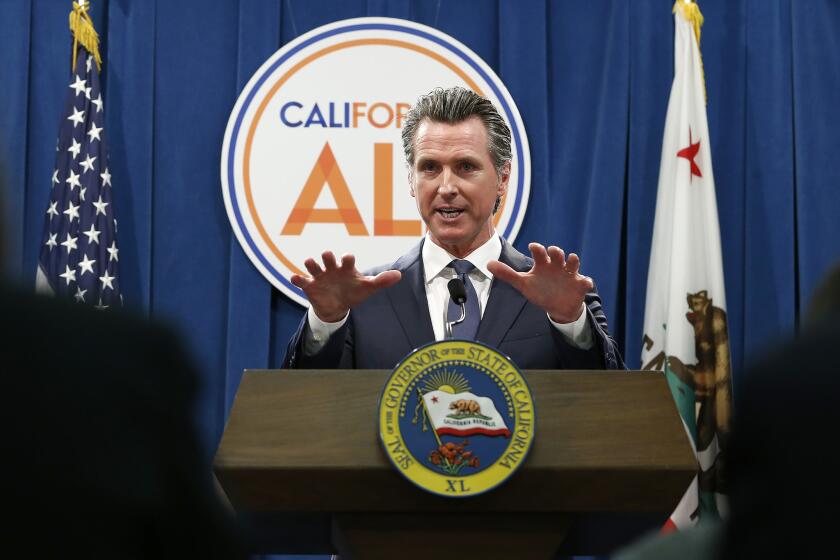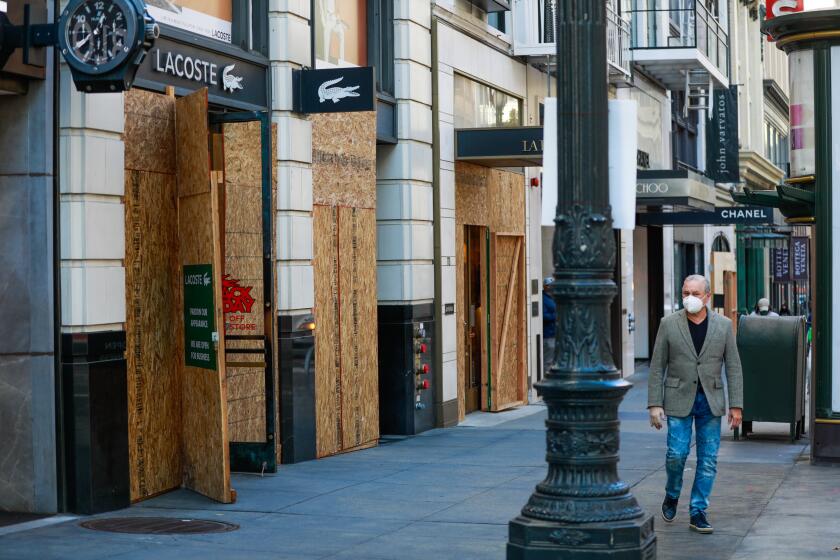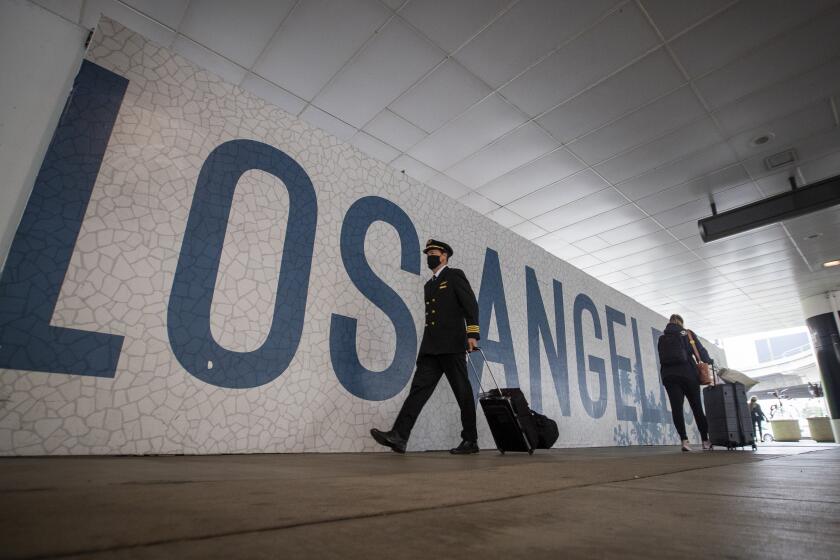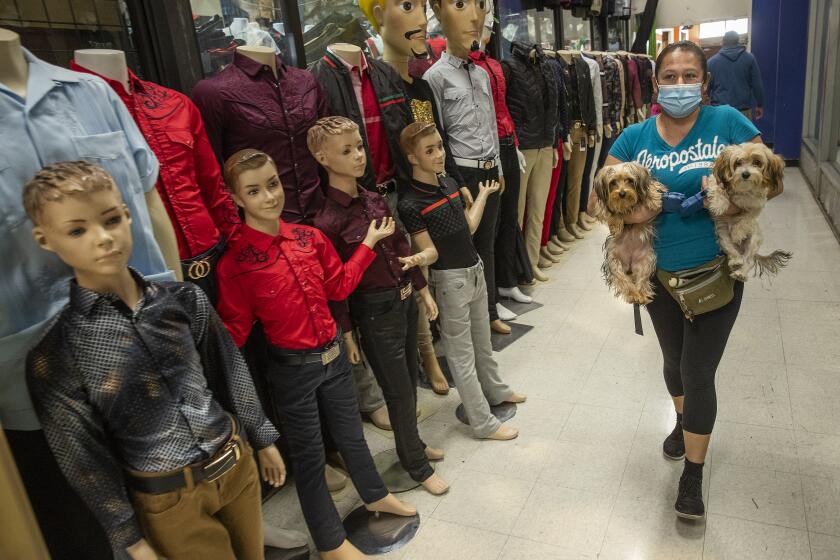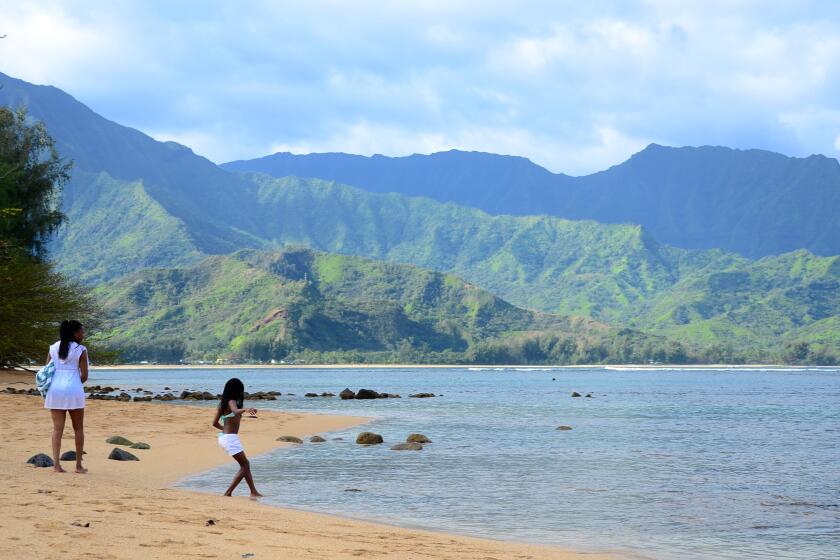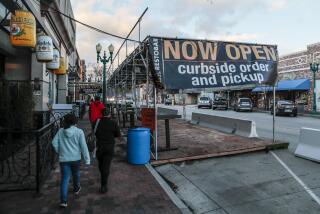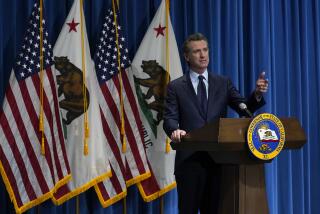California’s stay-at-home order allows essential travel only. What does that mean?
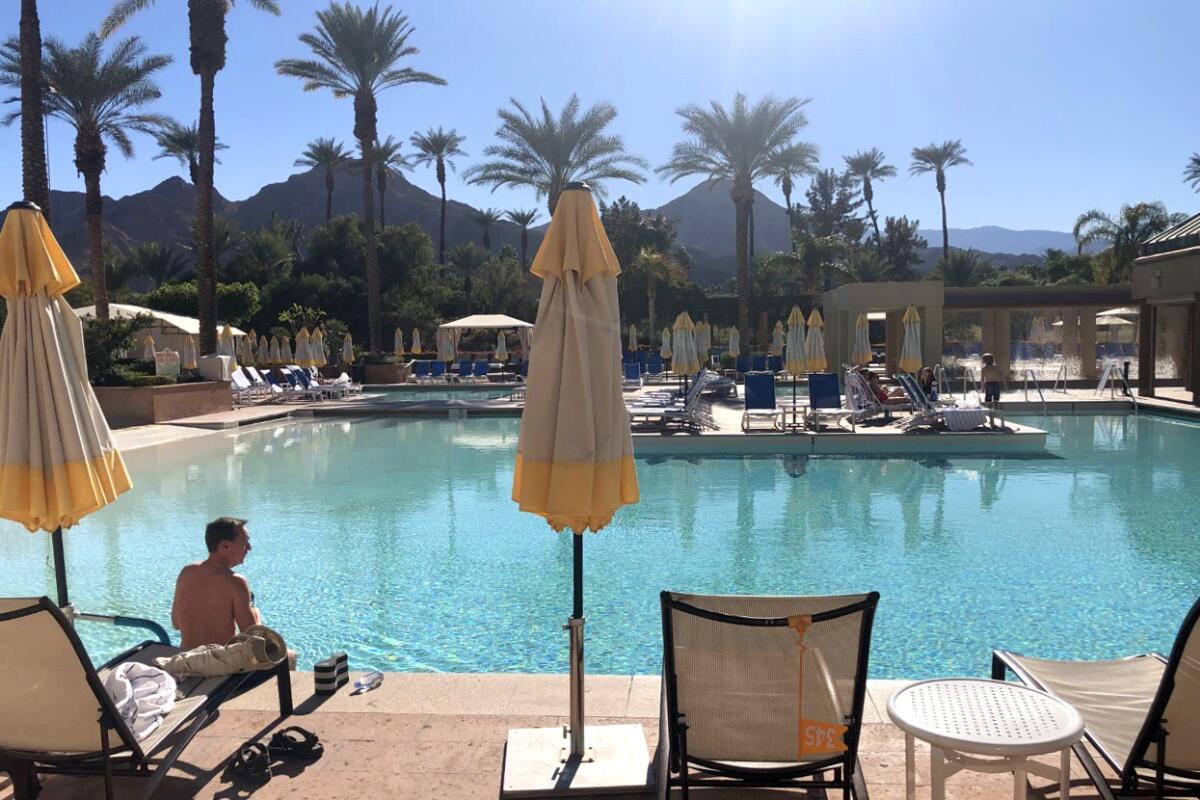
- Share via
Stop traveling, the governor says.
With the “regional stay-at-home” order issued Thursday and likely to be triggered in coming days, Gov. Gavin Newsom is imploring Californians to stay home for at least the next three weeks and cinching already tight restrictions in areas where the COVID-19 pandemic has hospitals under the heaviest pressure.
San Francisco city and county will preemptively put rules into effect starting 10 p.m. Sunday. It’s expected to be in effect until Jan. 4, according to a tweet from Mayor London Breed. The rules also apply to Contra Costa, Alameda (including Berkeley), Santa Clara and Marin counties.
Outlining the new restrictions, which include new capacity limits for retailers and other changes, state officials said hotels and other lodgings will be allowed “to open for critical infrastructure support only.” But in the immediate aftermath of the governor’s announcement Thursday afternoon, details of the new travel restrictions remained unclear.
Additional closures of California businesses and activities will be based on projections of regional intensive care unit capacity.
Dr. Mark Ghaly, the state’s secretary of Health and Human Services, said the state is, in effect, telling, not asking, Californians to stop all nonessential travel. That includes canceling holiday travel plans, he added.
“The message of the day is, as much as you can, be at home,” Ghaly said.
However, he and Newsom also said that parks and beaches would remain open and that Californians could boost their mental health by hiking, running, fishing, practicing yoga, skiing, snowboarding and otherwise savoring outdoor activities.
The latest maps and charts on the spread of COVID-19 in California.
Officials said the new regional stay-at-home order is triggered once a region’s ICU bed capacity falls beneath 15%, with shutdown rules to take effect within 24 hours. On Thursday night, state tallies put the Southern California region’s ICU bed capacity at 20.6%, the San Joaquin Valley’s at 19.7%, greater Sacramento’s at 22.2%, the San Francisco Bay Area’s at 25.3% and Northern California’s at 18.6%. Given the timing of the new rule, the earliest any region could see closures is Sunday.
Besides its travel elements, the new order “prohibits private gatherings of any size, closes sector operations except for critical infrastructure and retail, and requires 100% masking and physical distancing in all others.” Once in place, it is intended to remain in effect for at least three weeks.
The 11-county Southern California region defined by the order includes Los Angeles, Imperial, Inyo, Mono, Orange, Riverside, San Bernardino, San Diego, San Luis Obispo, Santa Barbara and Ventura counties.
None of the five designated regions in California have reached the critical under-15% ICU capacity, but all are expected to hit that mark soon.
In a widely circulated letter to industry professionals, Visit California President and Chief Executive Caroline Beteta wrote that in regions where the order takes effect, “hotels can remain open, although the order announced today bans non-essential travel statewide.”
She also noted that ski resorts can stay open (but must close their food and beverage services) and that campgrounds must close, along with wineries, breweries, museums, zoos, family entertainment centers and aquariums.
Mammoth Mountain Ski Area spokesman Tim LeRoy confirmed the information about ski operations. California State Parks did not respond to questions about how the governor’s order would affect its campgrounds. As of Wednesday, 83 state campgrounds were at least partly open.
Other details of the state’s plan for enforcing the tighter limits remained unclear Thursday afternoon.
With the pandemic worsening and winter break nearly here, many families are rethinking their holiday travel plans.
In a web Q&A explaining the new travel guidelines, state officials said: “Stay in your county if you can. Don’t drive more than 2-3 hours.”
“You can travel for urgent matters or if such travel is essential to your permitted work,” they say, but “avoid traveling long distances for vacations or pleasure as much as possible.”
At the Hotel Figueroa in downtown Los Angeles, a spokeswoman said in an email that the hotel is “closely tracking & monitoring the new state limits and will remain open for essential persons, first responders, and booked-in hotel guests at this time.”
When it comes to additional details, however, the governor’s office “is in the process of putting together the specifics of the order. We don’t have it yet,” said Pete Hillan, spokesman for the California Hotel & Lodging Assn.
Hillan added that after hearing the governor’s news conference, he expected to soon see documents that ban leisure travel in the affected regions, a move with sweeping economic consequences. Among the questions to be answered:
If Californians can’t give essential reasons for travel, could they be cited or prosecuted for checking into a hotel? A short-term rental? A campground?
Would travelers need to say or show something at check-in to prove that they’re not tourists? What would be required?
The new order requires Californians to stay home and minimize their interactions with other households as much as possible.
Could the lodgings be cited for accepting bookings from tourists? Would lodgings be responsible for questioning guests of their reason for traveling? Would short-term rentals or campground have different restrictions than hotels?
“We are obviously eagerly awaiting that,” Hillan said.
Officials have said the status of the state’s nine national parks depends on consultation with county health officials and could take several days to sort out. Officials at Joshua Tree National Park will huddle with Riverside County leaders. In Yosemite’s case, that means Mariposa County.
Thursday’s news follows a series of loosening, then tightening restrictions as COVID-19 infections and deaths grow throughout the state.
After widespread shutdowns in spring, California officials agreed to allow hotels to reopen June 12 in most of California’s 58 counties. Through the summer and early fall, lodgings operated at dramatically reduced but gradually growing occupancy. Now, with infections and deaths rapidly multiplying and widespread vaccine availability months away, state officials said another dramatic set of steps is needed.
“We clearly as a society blew through the stop signs on Thanksgiving,” said Hillan of the California Hotel & Lodging Assn. But the economic consequences of this week’s restrictions, he said, may be devastating in their own way.
With negative COVID-19 test results, travelers can visit several Hawaiian islands. Kauai’s rules are tighter, but with a bracelet monitor, a resort stay is possible.
When the year began, he said, “we had roughly 239,000 hotel employees in the state of California.” By this week, the number was less than half that, Hillan said, and about 59% of hotels nationwide have “a distressed loan” — meaning a loan that’s in arrears or being renegotiated or both.
Now, with leisure travel banned, “we’re extraordinarily concerned about what’s going to happen with our employees. You do get to a point where, after this long a time, there’s no money,” Hillan said. “It’s a difficult question.”
On Nov. 13, the state Public Health Department issued an advisory urging that anyone entering California on a nonessential trip — whether they are outsiders arriving or Californians returning from elsewhere — “should practice self-quarantine for 14 days after arrival.” During quarantine, that advisory said, “these persons should limit their interactions to their immediate household.”
More to Read
Sign up for The Wild
We’ll help you find the best places to hike, bike and run, as well as the perfect silent spots for meditation and yoga.
You may occasionally receive promotional content from the Los Angeles Times.
